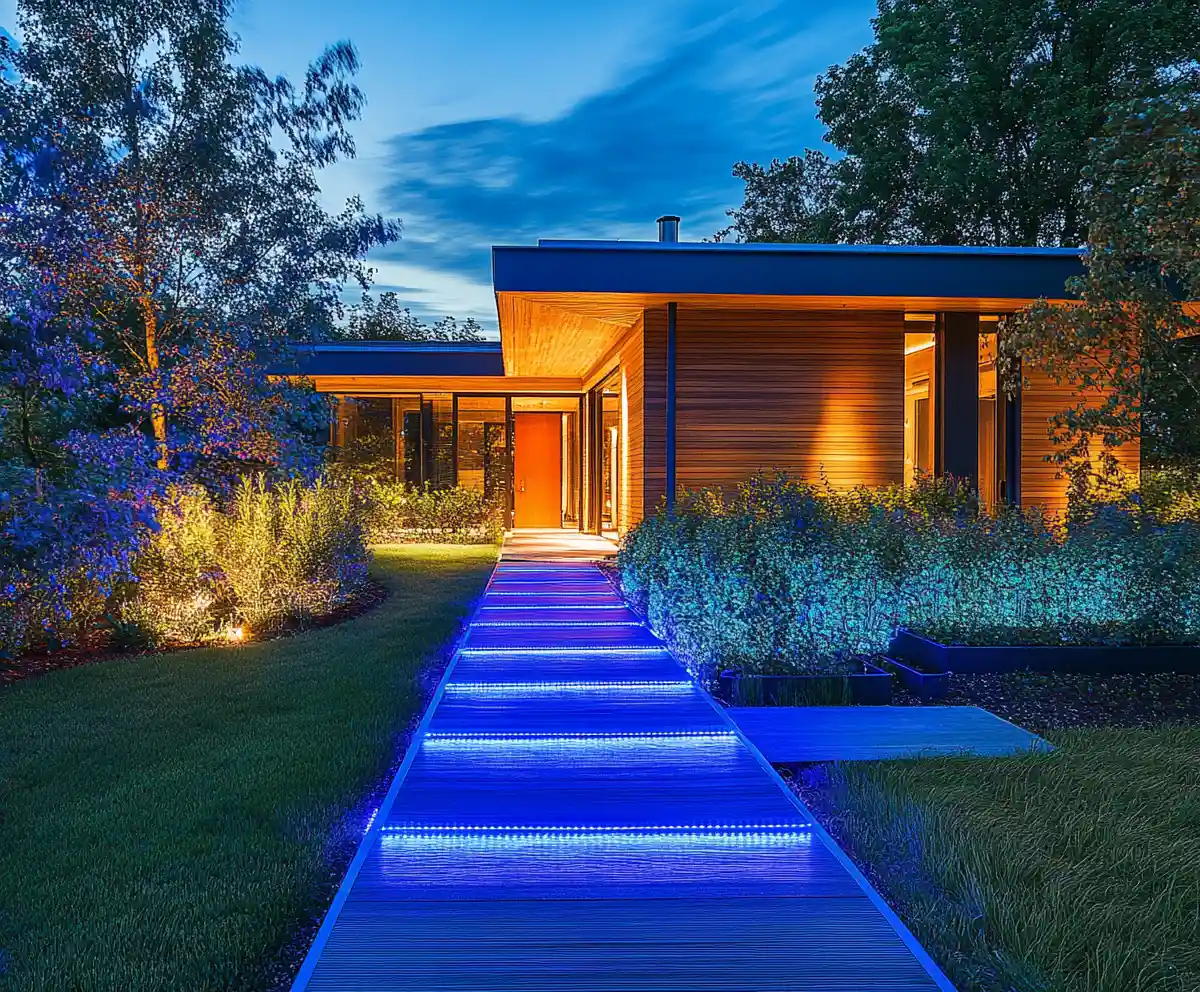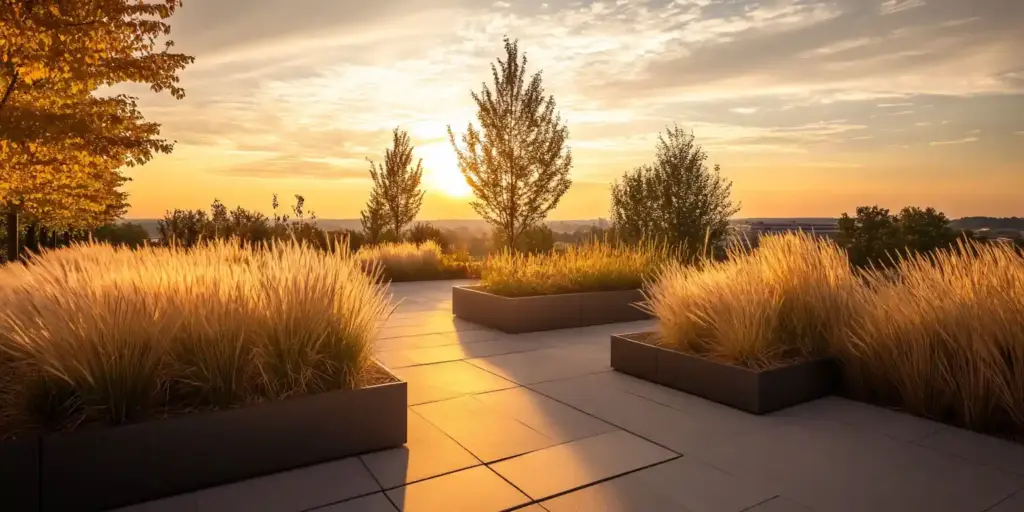Transforming a compact front yard into a welcoming, eye-catching space doesn’t require a massive budget or endless square footage. With smart landscape design for small front yard areas, even the tiniest plot can become a stylish, functional extension of your home.
The secret lies in prioritizing intentionality over quantity. When each element is thoughtfully chosen, even a small yard can include dynamic features—like vertical gardens, cozy seating nooks, or bold focal points—without feeling crowded.
Whether you’re boosting curb appeal, simplifying maintenance, or creating a personalized retreat, small-space landscaping is all about blending form, function, and flow. With the right techniques, you can unlock the full potential of your front yard—no matter its size or shape.
1. Utilize Vertical Garden Space
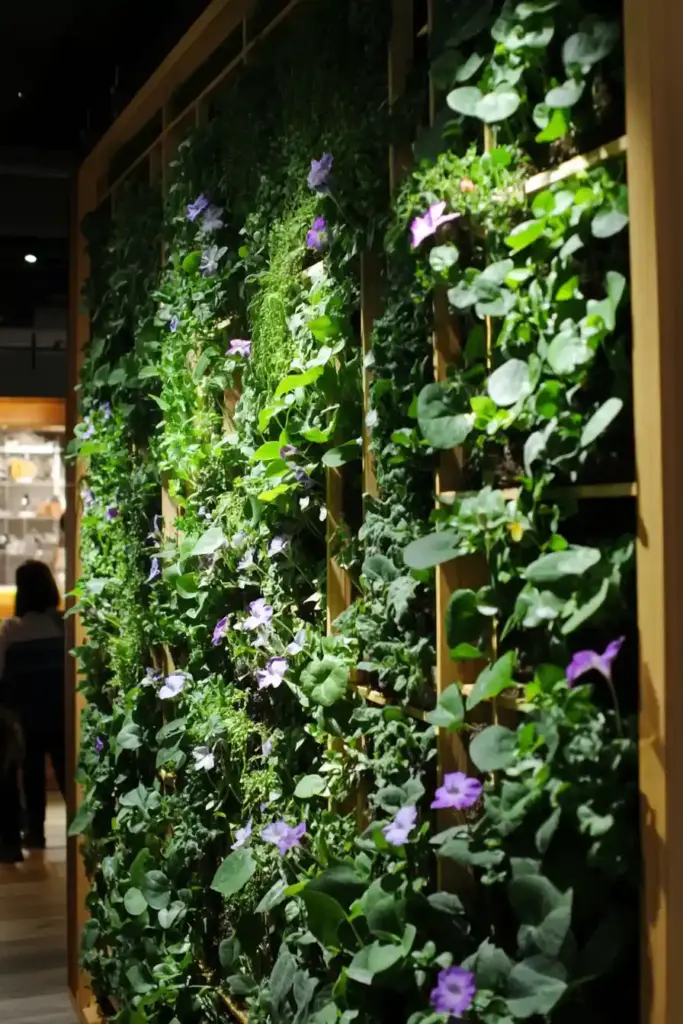
When ground space is tight, the only way is up! Vertical gardens are a smart and stylish solution for maximizing landscape design for small front yard areas. They add lush greenery without sacrificing square footage—and create a striking visual centerpiece at the same time.
Why Go Vertical?
Vertical gardening not only enhances curb appeal but also makes your yard feel larger by drawing the eye upward. It’s a fantastic way to introduce more plants, textures, and even edible herbs while keeping walkways and open zones clear.
You can build upward with:
- Wall-mounted planters
- Trellises with climbing vines
- Tiered shelves or ladder gardens
- Hanging baskets from pergolas or fences
Best Plants for Vertical Gardens
Choose plants that thrive in confined soil spaces and don’t grow aggressive roots. Great options include:
- Succulents and ferns (low-maintenance and decorative)
- Trailing vines like pothos or creeping fig
- Herbs like thyme, oregano, and mint for beauty and fragrance
For a modern upgrade, use stylish fiberglass or composite planters that blend durability with a designer feel. Bonus: they resist weather and aging much better than wood or clay.
DIY Tip 💡
Repurpose an old wooden pallet, shoe organizer, or metal grid into a vertical planting wall. Add hooks or small pots, and you’ve got an instant green wall that’s as functional as it is beautiful.
2. Embrace Minimalist Landscaping
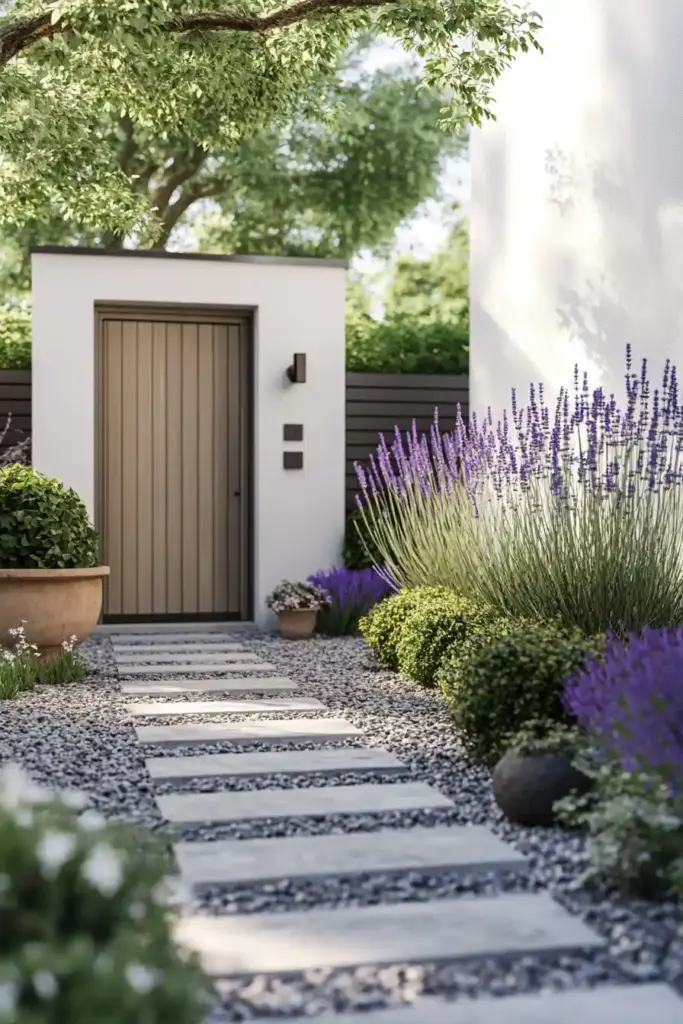
In a small front yard, less really is more. A minimalist approach to landscape design for small front yard spaces helps you focus on clean lines, uncluttered layouts, and high-impact elements that create a sense of calm and order.
The Beauty of Simplicity
Over-decorating a small space can quickly make it feel cramped. Minimalist landscaping strips away the unnecessary, allowing the most beautiful features—like a single sculptural plant, a modern planter, or a crisp gravel path—to shine.
This style thrives on:
- A limited plant palette (think 2–3 types, repeated)
- Neutral tones in hardscape and containers
- Defined edges using stone, concrete, or wood
- Plenty of open space to let the design “breathe”
Advantages of Minimalism in Small Yards
- Easier maintenance: Fewer elements = less weeding, watering, and trimming
- More visual clarity: Key features pop instead of competing for attention
- Budget-friendly: Simpler layouts often cost less to install and care for
Design Tips for a Minimalist Vibe
- Use symmetry to create balance
- Stick to monochromatic or analogous color schemes for a cohesive feel
- Try raised beds or low-profile planters to organize plantings neatly
- Incorporate textures (like smooth pebbles, brushed concrete, or wood grain) instead of lots of color
Minimalism doesn’t mean boring—it means curated. Each element in your yard should serve a clear purpose, both visually and functionally.
3. Incorporate Eye-Catching Pathways
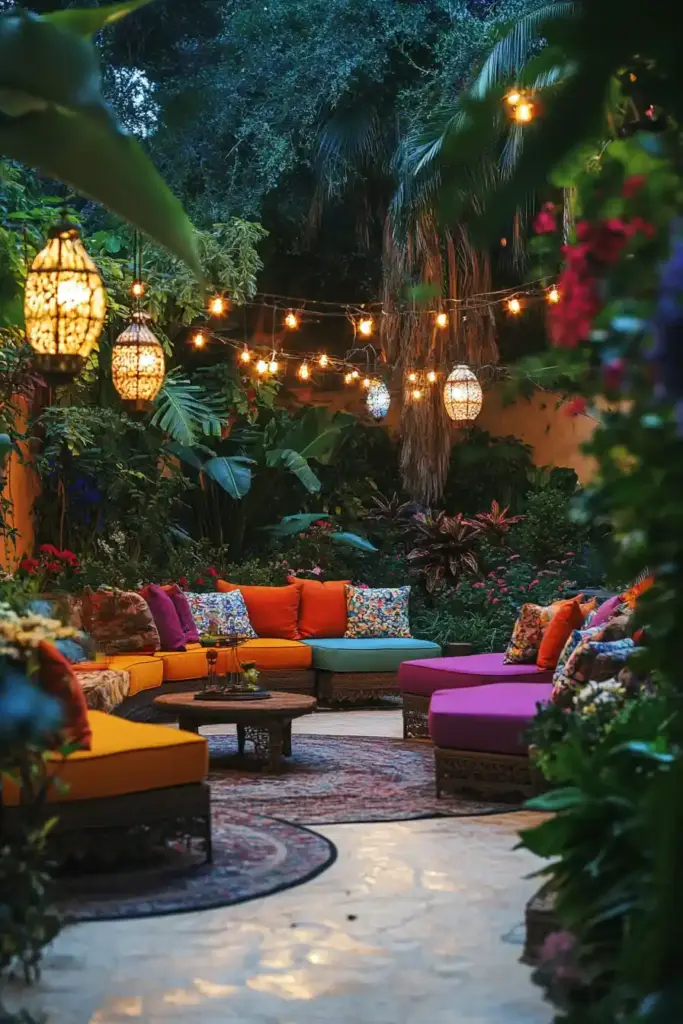
A well-designed pathway can instantly make a landscape design for small front yard look polished and purposeful. More than just a way to get from A to B, a pathway can define your yard’s flow, guide visitors’ attention, and visually stretch the space.
Why Pathways Matter in Small Yards
In limited spaces, creating visual direction helps prevent chaos. A pathway breaks up the yard into zones—entry, plantings, seating—and gives each area its own identity. It also introduces rhythm and structure, helping the space feel curated and complete.
Pathway Design Ideas
Mix and match materials for texture and style:
- Stone slabs + turf for a soft, natural feel
- Gravel with metal edging for a clean, modern look
- Brick borders + pea gravel for timeless charm
- Concrete pavers for a minimalist, urban vibe
Curved paths create the illusion of depth, while straight lines add formality and structure. Try weaving a path past key features like planters or sculptures to draw attention.
Practical Tips
- Ensure proper grading and drainage to avoid water pooling
- Use permeable materials (like gravel or spaced pavers) to improve eco-friendliness
- Consider low-voltage path lighting for nighttime safety and ambiance
- Incorporate planters or groundcover along the edges to soften the transition between zones
Even in a small space, a thoughtfully placed pathway adds movement, elegance, and order—while inviting guests in with style.
4. Add Charming Focal Points
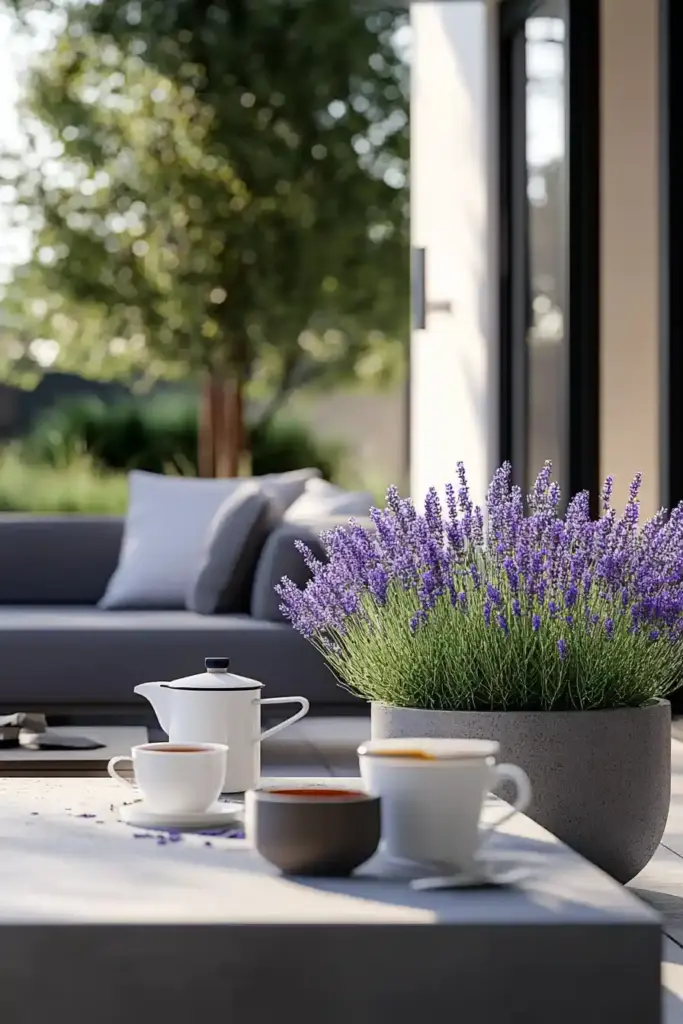
Every standout front yard—no matter the size—has a star of the show. A well-chosen focal point brings structure, visual interest, and personality to your landscape design for small front yard layouts, guiding the eye and creating a sense of purpose.
What Makes a Great Focal Point?
In small spaces, a focal point doesn’t have to be large—but it should be intentional. Think of it as the “anchor” of your design: the one feature that sets the tone and draws attention as soon as someone walks up.
Some popular (and small-space-friendly) options include:
- A sculptural planter in a bold color or shape
- A compact water feature like a bubbling fountain
- A piece of outdoor art or a modern statue
- A vibrant flowering shrub or small ornamental tree
- A colorful bistro set or painted bench
Pro Tips for Placement
- Center the focal point along your main sightline—typically from the street or front walkway
- Keep surrounding elements minimal so the eye isn’t overwhelmed
- Choose materials that complement your home’s exterior for a cohesive look
Choosing the Right Size
Scale is everything. Go for features that are proportional to your yard—something too large can make the space feel crowded, while something too small might get lost. Aim for “just right”: eye-catching, but not overpowering.
A single focal point, framed by thoughtful landscaping, creates a curated look that makes your front yard feel intentional and stylish, even if it’s small in size.
5. Design with Color and Contrast
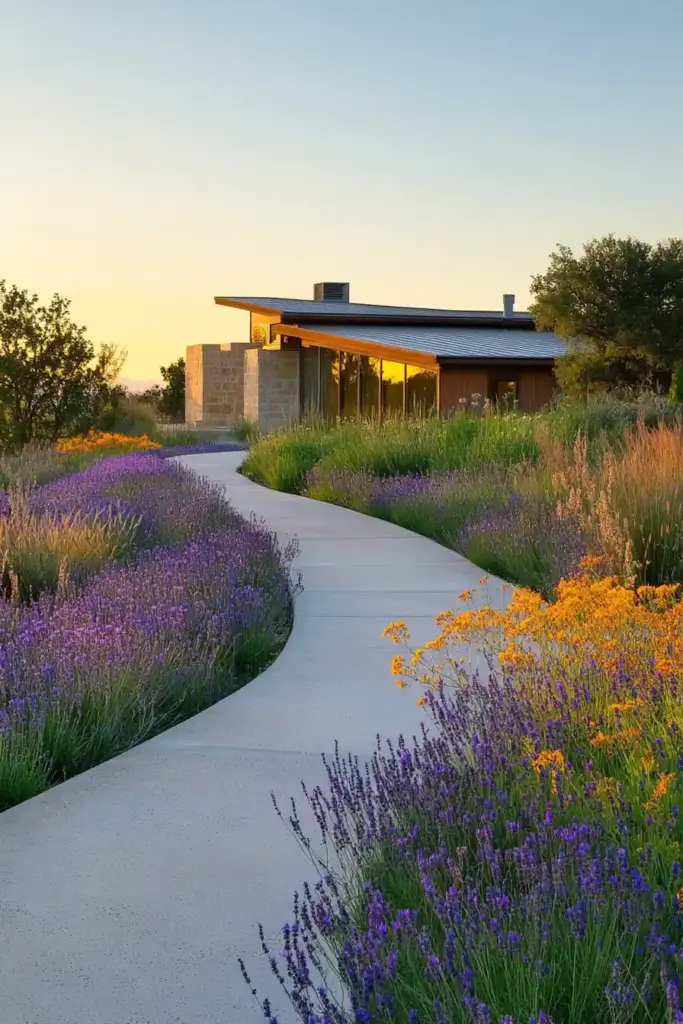
Strategic use of color and contrast can completely transform a compact space. In fact, it’s one of the most powerful tools in landscape design for small front yard projects. With just a few well-placed hues and textures, you can create depth, draw attention, and make your yard feel more dynamic.
How Color Impacts Small Spaces
Color influences how we perceive size and mood. Cooler shades like green, blue, and lavender can make your space feel larger and more serene. Warmer colors like red, orange, and yellow bring energy and make focal points pop.
Mixing bold with subtle, light with dark, or matte with glossy adds complexity without clutter.
Smart Ways to Add Contrast
- Pair rounded plants (like boxwoods or hydrangeas) with spiky grasses (like fescue or phormium)
- Combine light gravel paths with dark planters for a crisp, modern look
- Offset bright blooms with neutral-toned containers or walls
- Alternate smooth surfaces (like polished concrete) with rough textures (like bark or natural stone)
Color Schemes That Work Well
- Monochrome greens with accents of silver or white (clean and cohesive)
- Analogous colors like purples, blues, and cool greens (natural and calming)
- Bold contrast like burgundy foliage against white gravel or black fencing (eye-catching and modern)
The trick is balance. Stick with a limited palette, repeat colors throughout the yard, and use contrast to highlight key areas—like pathways, entry points, or focal planters.
6. Sustainable Landscaping Techniques
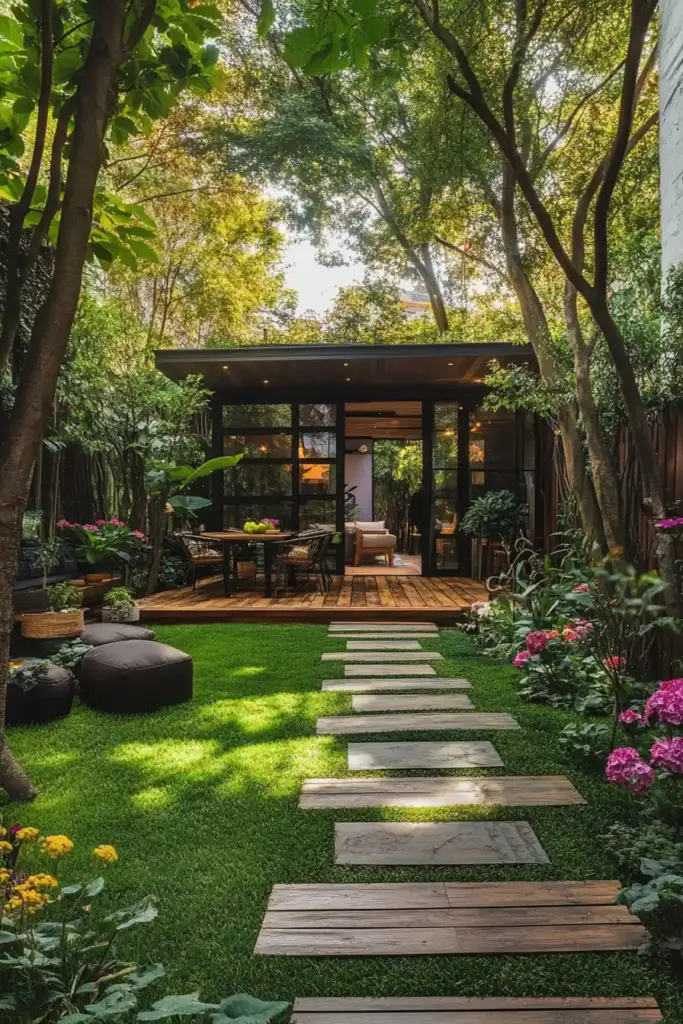
Designing an eco-friendly yard isn’t just good for the planet—it’s also ideal for small spaces. When sustainability meets smart landscape design for small front yard layouts, you get a beautiful, low-maintenance space that works with nature, not against it.
Why Sustainability Matters (Especially in Small Yards)
Small yards benefit greatly from eco-conscious choices because every square foot counts. Sustainable designs reduce waste, cut water use, and minimize long-term upkeep—while supporting biodiversity and boosting curb appeal.
Easy Eco-Friendly Landscaping Ideas
- Use native or drought-tolerant plants that require less water and fertilizer
- Install permeable surfaces (like gravel or spaced pavers) to reduce runoff
- Incorporate mulch to retain moisture and suppress weeds
- Harvest rainwater with barrels or underground tanks for garden use
- Compost yard waste to create nutrient-rich soil naturally
Green Materials to Consider
- Reclaimed wood for borders, decks, or vertical features
- Recycled concrete as stepping stones or hardscape edging
- Fiberglass planters, which are long-lasting, lightweight, and recyclable
- Locally sourced stone to reduce transportation impact
Low-Maintenance, High-Impact Plants
Choose resilient, zone-appropriate plants like:
- Lavender – fragrant, hardy, and pollinator-friendly
- Black-eyed Susans – long-blooming and vibrant
- Yarrow – drought-tolerant and softens hard edges
- Native ornamental grasses – low care and add texture
Sustainable design isn’t just a buzzword—it’s a smarter, future-forward way to garden. And in small spaces, it makes your yard more beautiful and more resilient, season after season.
7. Maximize Functionality with Multi-purpose Elements
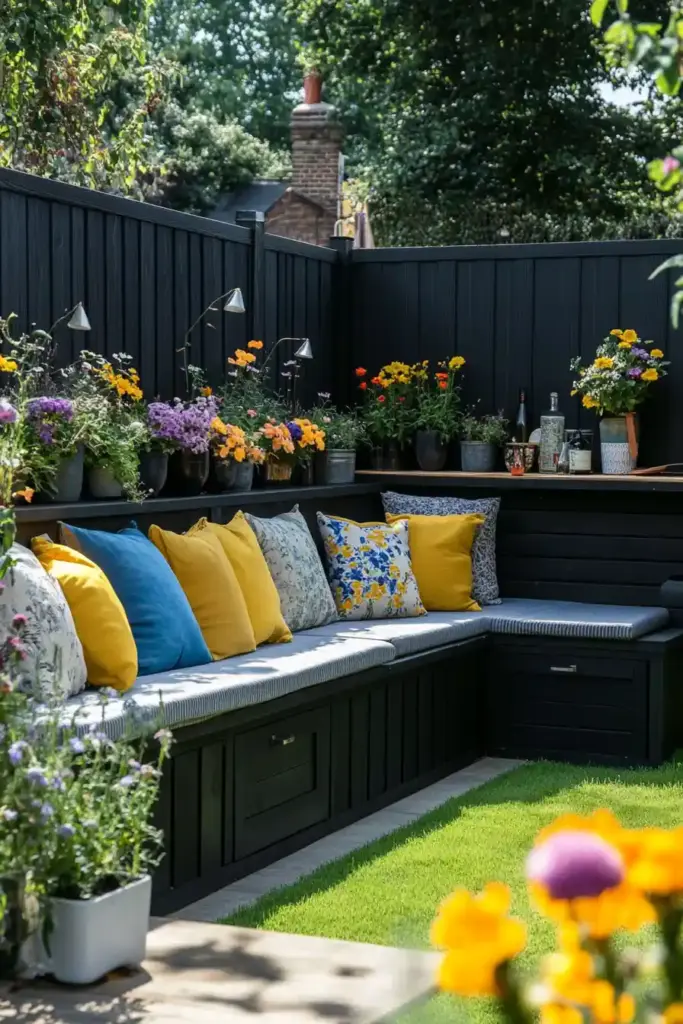
In small front yards, versatility is everything. To make your landscape design for small front yard both beautiful and practical, lean into features that serve more than one purpose. Multi-functional design helps reduce clutter, boost usability, and add thoughtful detail—without overloading the space.
Smart Design Means Double-Duty Features
Every element in your small yard should earn its keep. That means choosing items that blend form with function:
- Benches with built-in storage for tools or outdoor cushions
- Planters that act as space dividers or privacy screens
- Fold-down tables that tuck away when not in use
- Decorative lighting that also enhances safety at night
- Movable planters on casters that let you easily reconfigure your layout
Functional Features to Consider
- Corner seating that turns a dead zone into a relaxing nook
- Oversized pots that hide irrigation systems or unsightly meters
- Wall-mounted hooks or shelves for garden tools, decor, or hanging plants
- Multi-use fences with vertical planting space or fold-out bars
Planning for Real-Life Use
Think about how you’ll use the yard day to day. Do you want a cozy spot for coffee? A space for kids or pets? A garden that’s easy to maintain? Design with those needs in mind, and choose flexible features that support them.
A small yard that functions well feels bigger—because it adapts to your lifestyle. And when every piece has a purpose, the entire space feels curated and intentional.
8. Optimize Privacy with Thoughtful Planting
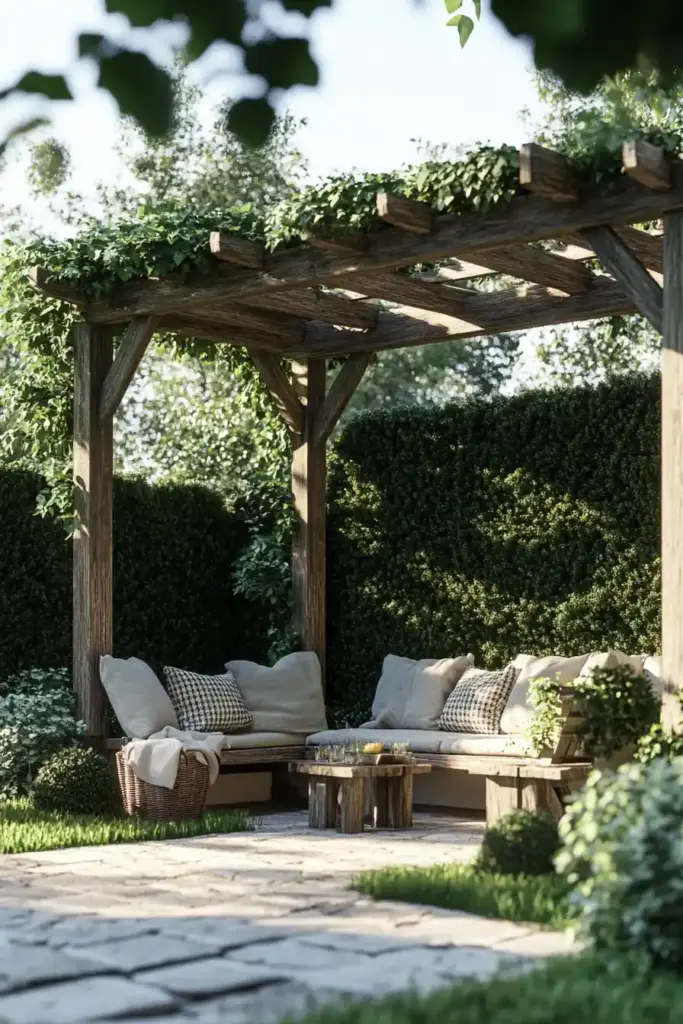
Privacy might seem like a luxury in a compact yard—but with the right plants and layout, it’s totally achievable. In fact, one of the most elegant ways to enhance your landscape design for small front yard is by using greenery to screen, soften, and shelter your space.
Natural Privacy Without the Bulk
Unlike solid fences that can make a small yard feel boxed in, plant-based privacy adds layers of texture and movement—while still giving you that cozy, tucked-away vibe. Plus, it offers benefits like wind protection, noise reduction, and seasonal color.
Best Plant Options for Natural Screening
- Clumping bamboo – fast-growing and space-efficient (just avoid running types)
- Boxwood hedges – classic, evergreen, and easily shaped
- Arborvitae or Italian cypress – tall and narrow for vertical coverage
- Layered shrubs like dwarf nandina, loropetalum, or hydrangea for softer edges
Creative Ways to Add Privacy
- Use trellises with climbing plants like jasmine, clematis, or honeysuckle
- Incorporate slatted screens paired with tall planters
- Add hanging baskets or mounted planter boxes along porch railings
- Frame sitting areas with columnar trees or ornamental grasses
Bonus Benefits
Green privacy doesn’t just block views—it also adds color, texture, and year-round interest. And since many screening plants double as pollinator habitats or air filters, they make your yard more eco-friendly too.
9. Illuminate Your Small Front Yard Elegantly
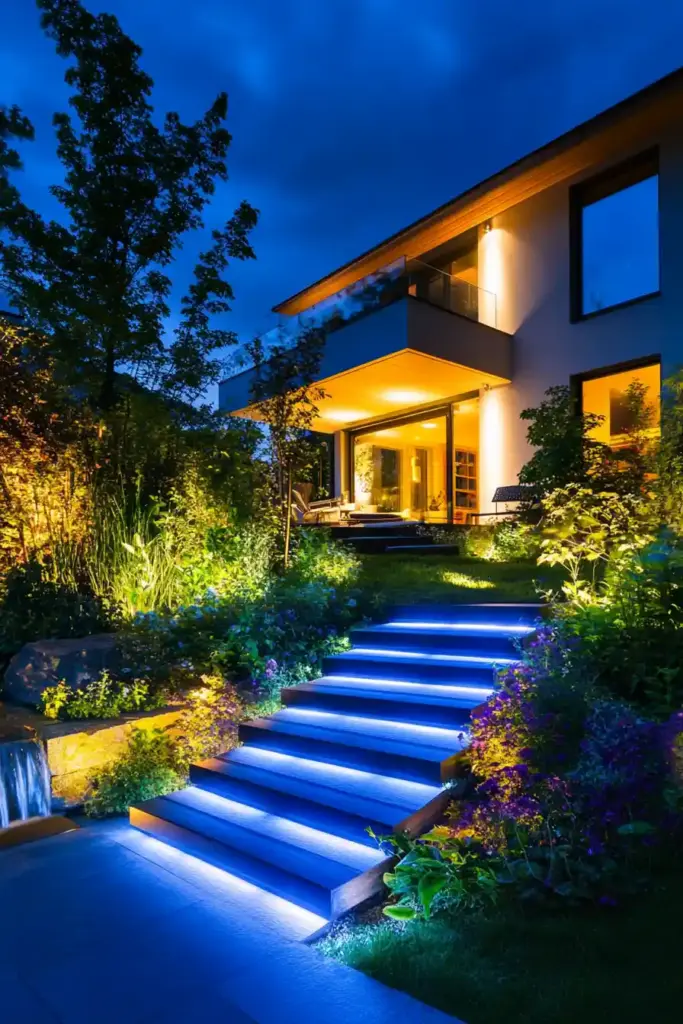
Great lighting doesn’t just let you enjoy your yard after sunset—it adds depth, drama, and dimension to your landscape design for small front yard layouts. In small spaces, the key is layering soft, intentional light that highlights your yard’s best features without overwhelming it.
Why Lighting Matters in Small Yards
Proper lighting:
- Extends the usability of your yard into the evening
- Increases safety for walkways and entryways
- Enhances curb appeal with a cozy, polished glow
- Accentuates focal points like plants, sculptures, or water features
Types of Lighting That Work Well
- Path lights – low, spaced lighting along walkways for safe strolling
- Up-lighting – placed at the base of trees or walls to create dramatic shadows
- Down-lighting – mounted from walls or eaves for soft, moonlight-style illumination
- String lights or lanterns – affordable and atmospheric for porches or railings
- Solar or LED spotlights – energy-efficient and easy to install
Small Yard Lighting Tips
- Focus on 3 key zones: entry path, focal plant or feature, and front porch
- Avoid over-lighting—less is more in compact yards
- Choose warm light tones (2700K–3000K) for a welcoming glow
- Use solar-powered or low-voltage fixtures to save energy and simplify setup
Even a single, well-placed light can shift the mood of your yard from flat to magical. Thoughtful illumination adds elegance and function, creating a front yard that shines day and night.
10. Incorporate Creative Containers and Planters
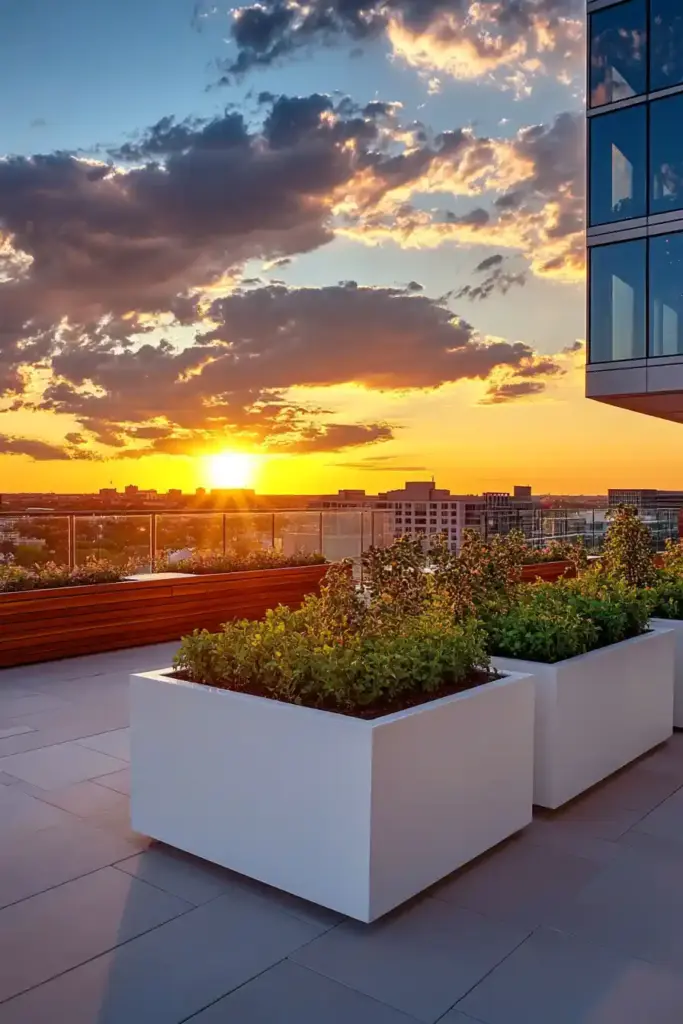
When space is limited, containers are a game-changer. They add dimension, versatility, and serious style to your landscape design for small front yard—all without permanent construction or digging.
Whether you want to showcase seasonal blooms, grow herbs, or create structure, planters give you total control over what goes where.
Why Containers Work So Well in Small Yards
- They’re mobile – move them around as needed to update the look or follow the sun
- They define zones – frame doorways, highlight paths, or section off sitting areas
- They bring height and layers – especially when mixing tall, trailing, and filler plants
- They’re low-commitment – change out plantings each season without redoing your whole yard
Choosing the Right Planters
- Use fiberglass or composite containers for durability and weather resistance
- Match shapes to your home’s architecture—sleek rectangles for modern styles, round pots for classic charm
- Group planters in odd numbers for a balanced, natural arrangement
- Vary heights and sizes to add depth and interest
Best Plants for Container Gardens
- Dwarf evergreens – like boxwood or compact spruce for year-round structure
- Trailing plants – like sweet potato vine, creeping jenny, or ivy
- Colorful annuals or perennials – such as petunias, calibrachoa, or salvia
- Herbs – basil, thyme, and rosemary are both beautiful and useful
Creative container gardening lets you refresh your yard with the seasons, try out new color schemes, and make the most of every corner—without committing to big changes.
🌼 Conclusion
A small front yard doesn’t have to limit your creativity—it’s an invitation to design smarter. With the right landscape design for small front yard strategies, you can maximize beauty, function, and flow in even the tiniest spaces.
From vertical gardens and minimalist layouts to smart lighting and stylish containers, every idea in this guide is built to help you create a space that feels larger, more inviting, and uniquely yours. Remember: it’s not about how much space you have—it’s how thoughtfully you use it.
So pick one or two ideas to start, and build from there. Your dream front yard is totally within reach—one well-placed planter or curved path at a time.

